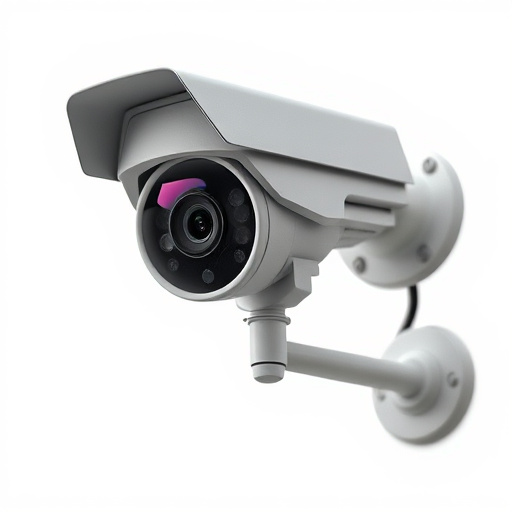Fake cameras have emerged as a cost-effective, powerful tool for neighborhood crime prevention, deterring potential criminals through realistic displays mimicking authentic surveillance equipment. Strategically placed, these devices create an illusion of heightened security and constant observation, significantly reducing criminal activity. However, their growing prevalence raises ethical concerns regarding privacy and transparency, requiring balanced security solutions alongside robust safeguards to protect individual freedoms in a rapidly evolving digital landscape.
“Unveiling the intricate world of fake surveillance equipment, this article delves into the surprising advancements that mimic reality with startling accuracy. From understanding fake cameras and their inner workings to exploring their role in neighborhood crime prevention, we dissect a technology that is both innovative and controversial. Discover the diverse types, applications, and ethical quandaries surrounding realistic-looking fakes, as we examine trends shaping the future of this unique and often misunderstood sector.”
- Understanding Fake Cameras: A Comprehensive Overview
- The Role of Imitation in Neighborhood Crime Prevention
- Types and Applications of Realistic Fake Surveillance Equipment
- Ethical Considerations and Future Trends in Fake Camera Technology
Understanding Fake Cameras: A Comprehensive Overview
Fake cameras, or mock surveillance equipment, have become an increasingly popular tool for neighborhood crime prevention. These realistic-looking devices offer a cost-effective and discreet way to deter potential criminals from targeting residential areas. By strategically placing fake cameras around a neighborhood, community members can create the illusion of enhanced security, which often serves as a powerful deterrent.
Understanding the intricacies of these false surveillance systems is key to their effective implementation. Fake cameras come in various forms, ranging from simple static displays to sophisticated moving models with LED lights and adjustable lenses. They are designed to mimic real cameras’ appearances, right down to the intricate details of brands and models, making them nearly indistinguishable from genuine equipment. This level of realism ensures that intruders will think they’re being watched, thereby encouraging them to choose easier targets for their criminal activities.
The Role of Imitation in Neighborhood Crime Prevention
In the fight against neighborhood crime, the strategic placement of surveillance equipment plays a pivotal role. One innovative approach gaining traction is the use of realistic-looking fake cameras. These imitation devices serve as powerful deterrents, as potential criminals often assume an area is under close watch when they see what appear to be authentic security cameras. This psychological effect can significantly reduce criminal activity by creating a perception of heightened risk and increased surveillance.
Fake cameras offer several advantages in neighborhood crime prevention. They provide communities with a cost-effective solution, as there’s no need for extensive investment in actual surveillance systems. Furthermore, these imitation devices can be easily moved or repositioned to cover different areas, offering flexibility in crime prevention strategies. This adaptability ensures that communities can quickly respond to changing criminal patterns and maintain a dynamic security approach.
Types and Applications of Realistic Fake Surveillance Equipment
Realistic fake surveillance equipment comes in various types, each with unique applications, primarily focusing on enhancing neighborhood crime prevention. These include hyper-realistic dummy cameras designed to mimic the look and functionality of actual security cameras. Such fakes can be strategically placed in areas where criminals might try to avoid being recorded, like alleyways or dimly lit corners, thereby deterring potential offenders.
Another type is the realistic fake motion sensors that simulate the activity of occupants within a property. This technology is valuable for deterring burglars and providing a sense of security to neighborhood residents. When combined with dummy cameras, these devices create an illusion of constant surveillance, making it a powerful tool in community-based crime prevention efforts.
Ethical Considerations and Future Trends in Fake Camera Technology
The proliferation of realistic fake surveillance equipment raises significant ethical considerations, especially in public spaces. While enhancing security and neighborhood crime prevention is a noble goal, deploying deceptive technology poses risks to privacy and transparency. As fake cameras become indistinguishable from real ones, it becomes challenging for individuals to know when they are being observed, potentially leading to a chilling effect on free expression and behavior.
Looking ahead, the future of fake camera technology suggests both advancements and challenges. On one hand, innovation in materials science could lead to even more convincing fakes, integrating seamlessly into urban landscapes. On the other hand, technological developments also offer opportunities for enhanced ethical safeguards. Improved image authentication tools, for instance, can help distinguish real from fake cameras. Additionally, regulatory frameworks could be established to govern the responsible use of this technology, balancing security needs with individual freedoms in a rapidly evolving digital environment.
Realistic fake surveillance equipment, or fake cameras, have emerged as a powerful tool for neighborhood crime prevention. By strategically placing these imitations, communities can deter potential criminals and promote a sense of security. This technology blurs the line between reality and deception, offering an innovative approach to public safety. As fake camera technology advances, ethical considerations become paramount, but it holds immense potential to revolutionize community policing and make neighborhoods safer.
